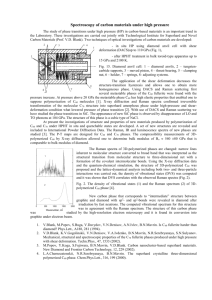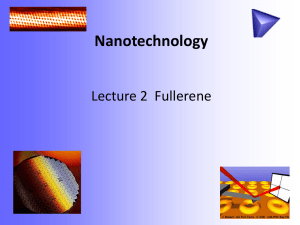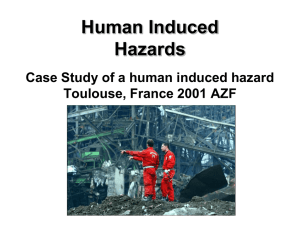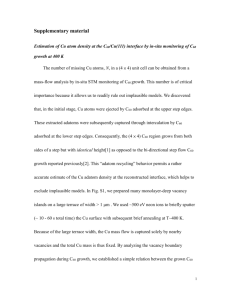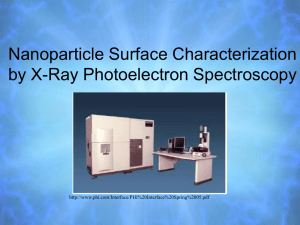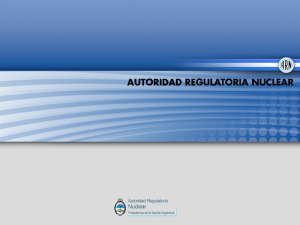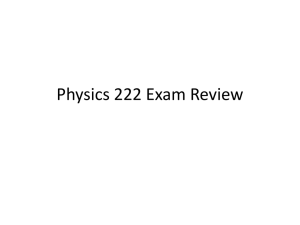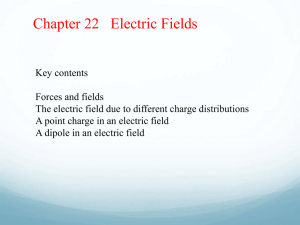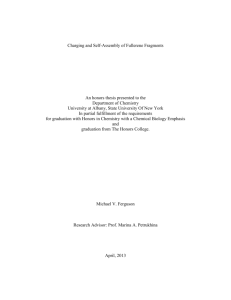Induced Dipole Moments - Physics & Physical Oceanography
advertisement
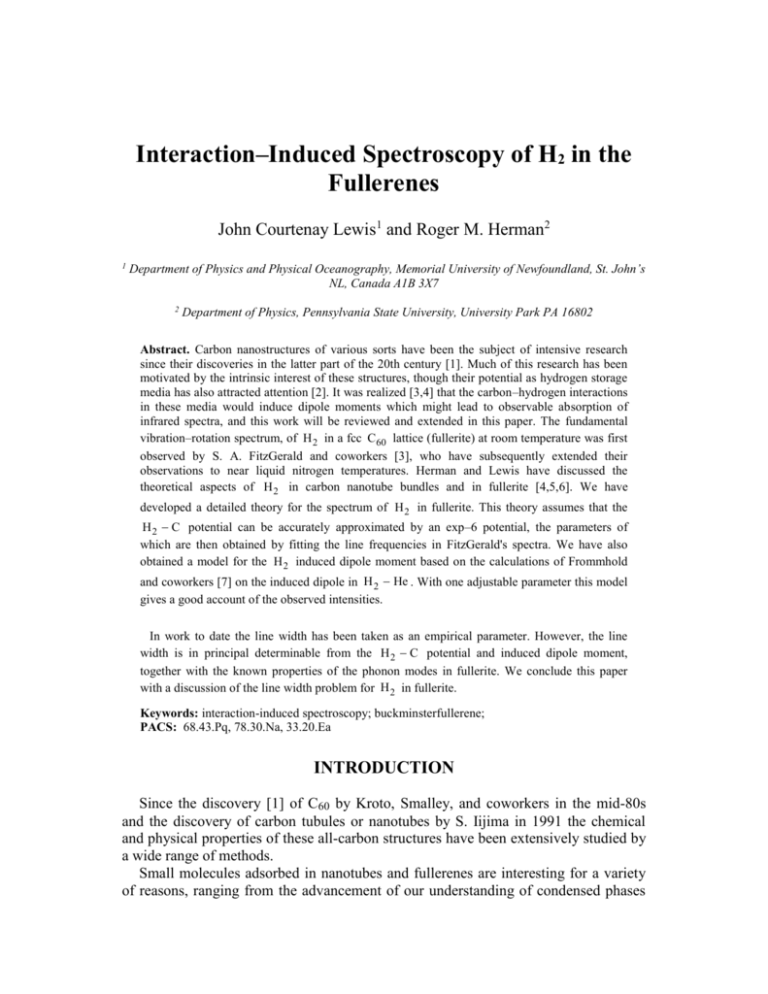
Interaction–Induced Spectroscopy of H2 in the Fullerenes John Courtenay Lewis1 and Roger M. Herman2 1 Department of Physics and Physical Oceanography, Memorial University of Newfoundland, St. John’s NL, Canada A1B 3X7 2 Department of Physics, Pennsylvania State University, University Park PA 16802 Abstract. Carbon nanostructures of various sorts have been the subject of intensive research since their discoveries in the latter part of the 20th century [1]. Much of this research has been motivated by the intrinsic interest of these structures, though their potential as hydrogen storage media has also attracted attention [2]. It was realized [3,4] that the carbon–hydrogen interactions in these media would induce dipole moments which might lead to observable absorption of infrared spectra, and this work will be reviewed and extended in this paper. The fundamental vibration–rotation spectrum, of H 2 in a fcc C 60 lattice (fullerite) at room temperature was first observed by S. A. FitzGerald and coworkers [3], who have subsequently extended their observations to near liquid nitrogen temperatures. Herman and Lewis have discussed the theoretical aspects of H 2 in carbon nanotube bundles and in fullerite [4,5,6]. We have developed a detailed theory for the spectrum of H 2 in fullerite. This theory assumes that the H 2 C potential can be accurately approximated by an exp–6 potential, the parameters of which are then obtained by fitting the line frequencies in FitzGerald's spectra. We have also obtained a model for the H 2 induced dipole moment based on the calculations of Frommhold and coworkers [7] on the induced dipole in H 2 He . With one adjustable parameter this model gives a good account of the observed intensities. In work to date the line width has been taken as an empirical parameter. However, the line width is in principal determinable from the H 2 C potential and induced dipole moment, together with the known properties of the phonon modes in fullerite. We conclude this paper with a discussion of the line width problem for H 2 in fullerite. Keywords: interaction-induced spectroscopy; buckminsterfullerene; PACS: 68.43.Pq, 78.30.Na, 33.20.Ea INTRODUCTION Since the discovery [1] of C60 by Kroto, Smalley, and coworkers in the mid-80s and the discovery of carbon tubules or nanotubes by S. Iijima in 1991 the chemical and physical properties of these all-carbon structures have been extensively studied by a wide range of methods. Small molecules adsorbed in nanotubes and fullerenes are interesting for a variety of reasons, ranging from the advancement of our understanding of condensed phases (does H2 adsorbed in nanotubes form a weakly bound anisotropic liquid at very low temperatures, for instance?) to achieving immediately practical applications. Preeminent among the latter is hydrogen storage. The search for an efficient low-pressure high-density storage system for molecular hydrogen has, in fact, motivated much of the work on hydrogen-adsorbing nanostructures. The interaction-induced spectroscopy of the hydrogens in the gas, liquid, and solid phases has been discussed at previous ICSLSs. In this talk we discuss work from the last five years on the very interesting spectroscopy of H2 in fullerene lattices. The IR spectra have been taken by S. A. FitzGerald of Oberlin College and his associates, and have been analyzed theoretically by T. Yildirim and associates at NIST, and by the present authors. Buckminsterfullerenes It is useful to review some of the properties of buckminsterfullerenes, and in particular properties of C60. References [1] and [8] are particularly useful in this regard. Buckminsterfullerene molecules are polyhedra of carbon atoms where each face is either a hexagon or a pentagon. They therefore have the same basic structure as “geodesic domes’’, albeit on a much smaller scale. Essential to their geometries is Euler’s theorem for polyhedra, which asserts that F V E 2 , where F the number of faces, V the number of vertices, and E the number of edges. If we let h the number of hexagons and p the number of pentagons then F p h, 2E 5 p 6h, 3V 5 p 6h so that 6 F V E 12 6 p h 2 5 p 6h 35 p 6h p. Hence there are exactly 12 pentagons in a fullerene molecule, regardless of its size. The smallest possible fullerene is C20, known as the fullerane C20H20, which contains no hexagons. However, it is a rule that the presence of adjacent pentagons tends to destabilize the fullerene; the smallest fullerene with no adjacent pentagons is C60, the celebrated “Buckyball”, which is the most stable and easily produced of this class of molecule. The next largest fullerene satisfying the “no-adjacent-pentagons” rule is C70, which is thermodynamically the most stable of the fullerenes. As of July 2006, C60 of 99.5% purity is available commercially at US$45 per gm and C70 of 99.0% purity at US$525 per gm. C60 has also been detected occurring naturally in rock in Russia and in Colorado. C60 The basic properties of C60 are as follows: the exterior diameter of a C60 is about 10.34 Å; all 60 C are equivalent; there are two types of bond, a “single” bond of length 1.46 Å, which is significantly shorter than the C-C bond in alkanes or in diamond; and a “double” bond of length 1.39 Å; there is little resonance and an absence of aromatic characteristics; According to a standard reference on fullerene chemistry [8], “C60 is a fairly electronegative system. It behaves like an electron-poor conjugated polyolefin.” Considerable charge separation is evident in C60, with the “single” bonds positive and the “double” bonds negative [9]. The resultant electrostatic forces among C60 molecules result in rotational ordering at low temperatures. At room temperature its stable phase is fcc. This is known as “fullerite”. C70 The second most common fullerene, C70, includes among its properties that it has five distinct C sites and eight distinct C-C bonds; it looks like a rugby football; and its chemistry is similar to that of C60. As for C60, the stable room-temperature phase of C70 is fcc [9]. Figure 1. DRIFT spectrum from ref. [3] of the fundamental band of H 2 adsorbed to saturation in a fullerite lattice approximately at room temperature. THE INDUCED FUNDAMENTAL BAND OF H2 AT ROOM TEMPERATURE When H2 is adsorbed into a fullerite lattice, the interaction of the hydrogen molecules with the surrounding C60 lattice results in induced dipole moments and dipole transition moments. Observing the resultant absorption spectra is not straightforward, because macroscopic crystals of fullerite have not been grown, and samples are available only as powders. The fullerite lattice is, however, nearly transparent in the region of the hydrogen fundamental band, and the induced spectrum can be obtained [3] by the technique of Diffuse Reflectance Fourier Transform Spectroscopy (DRIFTS). A spectrum taken at room temperature is shown in Fig. 1. The major features of the spectrum can be labeled in standard notation as follows: nz nz 1 Q J R : J J , Q J P : J J , nz nz 1 S J P : J J 2 , nz nz 1 S J R : J J 2 , O J R : J J 2 , O J P : J J 2 , nz nz 1 nz nz 1 nz nz 1 Here, “ nz nz 1 ” is shorthand for “ nz nz 1 and nx 0 and ny 0 or nx nx 1 and ny 0 and nz 0 or ny ny 1 and nz 0 and nx 0 ”. If a shift of approximately 54 cm1 from the corresponding free molecule vibration-rotation energies resulting from the differential perturbation of the v 0, 1 levels is taken into account, the bands can readily be identified [C,F]. The larger O(2) R intensity will be obscured by the Q(J )P peaks, for all J, at 3950 cm1 . The tallest peak, at 4200 cm1 arises from the Q(J )R transitions, for all J. This peak also contains, in its higher frequency wing, the S(0)P feature. The peak at 4550 cm1 is mostly S(1)P , also supplemented by the weaker S(0) R . The tall peak at 4800 cm1 is mostly S(1) R , and obscures the S(2)P feature. The small peak at 5000 cm1 is mostly S(2)R , but has the S(3)P in its high frequency wing. The weak peak at 5200 cm1 is almost entirely S(3) R . The reason for the predominance of the S(1) over the S(0) features comes not only from the larger statistical weight of the J 1 states over J 0 , but by virtue of the spin statistics, the S 1 state that accompanies odd-J states being three times as frequently encountered, all other things equal, as the singlet spin state accompanying the even-J states. In addition, there are three small relatively sharp features at approximately 4100 cm1 , 4450 cm1 , and 4650 cm1 . These “sharks-teeth” almost certainly reflect a breakdown of the octahedral symmetry of the fullerite, perhaps from defects or perhaps from partial rotational ordering of the C60 molecules. The various possibilities are discussed in ref. [6]. INTERMOLECULAR POTENTIALS AND ENERGY LEVELS The C-H2 Potential Our work is based upon the C-H2 potential, which we take to be of two forms: 12 6 U r 4 Lennard-Jones r r 6 U r 4 exp r exp-6 r with 11.2912 / . The exp-6 potential with this parametrization for has the same well depth , the same zero crossing radius and the same C6 coefficient as the Lennard-Jones potential. The C60-H2 Potential If the 60 C atoms of a C60 molecule are smeared uniformly over a sphere of radius a then the above C-H2 potentials yield the following potentials for the interaction of an H2 molecule with a C60: 2 10 15 4 15 4 UC60 -H2 R 4 3 Ra R a 2 R a 2 R a from the Lennard-Jones potential and 2 30 1 R a Ra 15 4 15 4 UC60 -H 2 R 4 e Ra 2 R a 2 R a 2 for the exp-6 potential. R is the displacement of the H2 molecule from the center of a C60 molecule. If the centers of the six C60 molecules bounding an octahedral cell enclosing an H2 are located at d, 0, 0 , 0, d, 0 , and 0, 0, d then the total potential of the H2, located at x, y, z relative to the equilibrium position of 0, 0, 0 is V x, y, z UC60 -H 2 d x 2 y2 z 2 UC 60 -H 2 d x 2 y2 z 2 2 2 UC60 -H 2 x 2 d y z 2 UC60 -H 2 x 2 d y z 2 2 2 UC60 -H 2 x 2 y 2 d z UC60 -H 2 x 2 y 2 d z . Determination of the Energy Levels We have found that the energy levels can be calculated approximately using a separable potential which is the sum of the three one-dimensional potentials across the faces of the fcc cell. If V x, y, z is the exact nonseparable potential then V x, y, z ; V1D x V1D y V1D z where 1 V1D x V x, 0, 0 V 0, 0, 0 . 3 The energy levels were determined in two ways. The first was a Discrete-Variable Representation (DVR) method in which a basis set of products of sines was used, the matrices of the position operators x̂, ŷ, ẑ were obtained and diagonalized, and their direct product was formed. The matrix of the potential V x̂, ŷ, ẑ is diagonal in this representation and is easily calculated. Details are given in the Appendix. The result is then added to the matrix for the kinetic energy, and the whole is diagonalized to yield the energies. This procedure can be used equally for a separable and a non-separable potential. The second method was to find the one-dimensional energies using the potential V1D z by a shoot-and-match procedure, and use these to obtain the energies for the separable three-dimensional potential. These energies served as a check on the DVR procedure, but also provided one-dimensional wave functions in useable form, from which the band intensities were calculated. Table 1 compares energies for the separable potential with those for the nonseparable potential to which it approximates. It is evident that the approximation of separability is satisfactory for the low-lying levels of greatest spectroscopic interest. o TABLE 1. exp-6 potential, = 3.22 A , = 3.25 meV Energy DegenEnergy for Energy for level eracy sum potential V x, y, z cm-1 cm-1 1 2 3 4 5 6 7 1 3 3 1 2 1 3 -926.7 -830.9 -739.4 -714.7 -705.6 -652.3 -624.7 -932.1 -836.4 -740.8 -713.1 -713.1 -645.1 -617.5 Principal states n , n , n x y z (000) ( 0 0 1 ) and perms. ( 0 1 1 ) and perms. ( 0 0 2 )* and perms. same as above (111) ( 0 1 2 ) and perms. 8 9 10 11 12 13 14 15 16 17 18 19 20 21 22 23 24 25 26 3 3 3 1 2 3 3 3 1 2 1 2 3 3 3 3 1 3 3 -617.5 -566.2 -538.3 -513.1 -501.8 -489.7 -474.2 -427.2 -419.7 -408.3 -407.8 -394.1 -374.5 -368.6 -325.0 -324.6 -318.8 -308.2 -284.5 -617.5 -569.9 -521.8 -494.2 -494.2 -474.3 -474.3 -409.8 -398.5 -398.5 -378.6 -378.6 -351.0 -351.0 -314.2 -314.2 -275.3 -255.3 -255.3 same as above ( 0 0 3 ) and perms. ( 1 1 2 ) and perms. ( 0 2 2 )* and perms. same as above ( 0 1 3 ) and perms. same as above ( 0 0 4 ) and perms. ( 1 2 2 )* and perms. same as above ( 1 1 3 )* and perms. same as above ( 0 2 3 ) and perms. same as above ( 0 1 4 ) and perms. same as above (222) ( 1 2 3 ) and perms. same as above The separation states are linear combinations of the states in the fifth column. (*) indicates that specific linear combinations are required as first order approximations to the eigenstates for the nonseparable potential. Thus for the doubly degenerate level 5, the eigenfunctions for V(x,y,z) can be represented to first order as 1 1 2 0 0 2 2 0 0 0 2 0 and 2 0 0 0 2 0 2 6 while level 4 to first order has the eigenfunction 1 0 0 2 2 0 0 0 2 0 . 3 Levels 4 and 5 form one triply degenerate level in the separable-potential approximation. The approximate separability of the potential is important, because the DVR method can certainly be used to calculate intensities, or indeed any other matrix element of functions of x, y, z, it is complicated to implement such calculations and we have not as yet been completely successful in doing so. It should be emphasized that for realistic parameters , the potential V x, y, z is neither very much like a box nor like an isotropic harmonic oscillator. In fact for typical values of these parameters it has a weak maximum at the center. Hence its approximate separability was not expected. Our approach to calculating the energies was to vary , by hand, recalculating the spectrum for each new set of values. This procedure was speeded by the approximate separability property of the potential V, because it is of course much faster to obtain one-dimensional eigenvalues by a shoot-and-match procedure than to diagonalize the large matrix which is required by the DVR procedure. We started with values of , which were close to those for graphene-hydrogen [10]. The results were not satisfactory, as can be seen in Fig. 3. The graphene-hydrogen potential of Wang et al. [11] was similarly unsatisfactory [6]. Agreement was finally obtained, as shown in Fig. 2, by using a value of which is about 13% greater and 21% shallower than the graphene-hydrogen values of ref. [10]. We could also distinguish between the exp-6 potential and the Lennard-Jones 12-6 potential, as can be seen in Fig. 4. The Lennard-Jones potential has been found to be satisfactory in graphene-adsorbate studies, but for H2 in fullerite it gives a spectrum which is too “boxy”, i.e. the V(x,y,z) which results is too “hard”. The softer exponentially dependent repulsion of the exp-6 potential seems to be necessary for accurate energies. o Our final best C-H2 potential was of exp-6 form with 3.22 A, 3.25 meV . Figure 2. The DRIFTS from Fig. 1 together with our best theoretical spectrum, which was calculated o for the exp-6 potential for which 3.22A and 3.25meV . The principal component Lorentzian 1 line shapes have HWHH of 24cm . Other parameters are described in the text. INDUCED DIPOLE MOMENTS To calculate the intensities as opposed to the positions of the lines it is necessary to have some estimate for the dipole moment induced between the C60 molecules and the H2 molecules. We define s s, , to be the orientation vector for the H2, r r, , to be the vector from a C to an H2, and R R,, to be the vector from the center of a C60 molecule to the center of an H2 molecule. Then according to Poll and Hunt the th spherical tensor component of the dipole moment induced between a C and an H2 is given by 4 p r,s AL r, s C L1; M M YM , YL M , . 3 LM For vibrational 0 1 transitions this gives p001 r 4 BL r C L1; M,M YM , YL,M , 3 LM where p001 r 0 AL r, s 1 is the matrix element of p0 r, s between the ground and first vibrational levels. From the symmetry of the H2 molecule only even and odd L contribute to the induced dipole moment. This implies a translational selection rule: nx ny 0 and nz 1 and permutations thereof. It is expected that the most important contributions to p001 will be the B01 term, mainly from the overlap contribution, and the B23 term, which contains the dominant long range quadrupole induced contribution. However, we also include the induction contribution to B01. It is known that the overlap and induction contributions to the total dipole moment have an origin similar to the intermolecular force in distortion of the molecular charge clouds, and a similar functional dependence on the intermolecular separation, albeit with a somewhat greater range. It would be possible for us to calculate intensities with such a functional form and adjust parameters so as to obtain agreement with the intensities. However, we will endeavour to estimate those parameters a priori, or at any rate on the basis of detailed ab initio calculations of HD-H2 by Borysow, Frommhold and Mayer [7], and on He-H2 by Schaeffer and Kohler [12], rather than to interpret fitted parameters a posteriori. Figure 3. Theoretical spectrum using an exp-6 potential based on the Novaco [10] C-H2 potential in o graphene, for which 2.85 A and 4.11meV ; with DRIFTS. Long Range Behavior of the Induced Dipole Moment At long range a bond polarizability model is used to relate B 23 R HeH 01 01 to B 23 2 R C60 H 2 . The result is B 23 R C 01 60 H 2 ; long range 93.3 R4 in atomic units. The long range (dispersion) part of B01 varies as R7 and can be neglected in first approximation. Figure 4. Theoretical spectrum using a Lennard-Jones interaction, with the same and as used for the exp-6 potential in Fig. 2. Short Range Behavior of the Induced Dipole Moment By graphical analysis of data from the afore-mentioned authors we find that 0.75 01 B01 r HeH2 ; 0.251 Fshort range r HeH2 with numerical values in atomic units, for values of r around . We also find that 01 01 B23 r ; 0.24B01 r . We conjecture that these relations hold for other atoms and small molecules as well as for He, provided that the bonding is largely physical rather than covalent, and provided that account is taken of differing charge deformability. The factor of 0.271 by itself cannot, be a general rule for relating the induced dipole moment and the 3/4th power of the intermolecular force. Both the intermolecular force and the induced dipole moment depend on the extent to which the atomic/molecular charge clouds are deformed by proximity of the colliding partner. However, this enters the intermolecular force as, in some sense, a sum of the deformabilities of the two collision partners, and the induced dipole moment as a difference of the deformabilities. Indeed, if the two collision partners are identical atoms, the induced dipole moment is zero. We conjecture that the reciprocal of the ionization potential I is an appropriate measure of the charge cloud deformability. Then, in general, instead of the factor 0.251 obtained for He-H2, we expect that 1 / IY 1 / IX 0.251 1 / I H 2 1 / I He will be the appropriate proportionality factor for colliding atoms and small molecules X and Y, in the absence of covalent bonding. Then for C-H2 1 / I 1 / IC 0.75 01 B01 F r r CH2 ; 0.251 H2 short range CH2 1 / I H 1 / I He 2 01 should be a good representation of the short-range part of B01 r CH . For the exp-6 2 potential the short-range part then yields 120 d 1 R a Ra Fshort range R C -H 2 e 60 2 R a dR which finally gives d 1 R a Ra e R C60 -H2 3.55 2 e . dR R a Then the 23 component is given by 93.9 01 01 B23 RC60 -H2 0.24B01 RC60 -H2 4 . R 01 The dimensionless parameter which enters both B01 R C -H and, implicitly, 0.75 01 B01 60 01 B23 RC 60 -H 2 2 , is an adjustable parameter representing our imprecise knowledge of both the short range part and the long range part of the induced dipole moments. The ratio of the two tallest peaks in the spectrum is sensitive to it; we found that the value 3.1 gave a good fit. The calculation of intensities from these induced dipole moments is described in ref. [6]. Low-Temperature Spectra S. A. FitzGerald and associates at Oberlin College have recently taken spectra at 80K and 10K [14,15]. We have applied our model to the 80K data. We obtain a good fit provided that: we assume that the lattice contracts by 1.4%; we take the temperature to be somewhat higher than 80K. Figure 5. Observed (DRIFT) and theoretical spectra of H2 in fullerite at approximately 80K. The DRIFTS was taken by S. A. FitzGerald and associates [14]. LINE WIDTHS AND LINE SHAPES Whereas both energy levels and intensities are based on a priori estimates of relevant parameters, the line widths in our room temperature and 80K were chosen freely, to give the best fits with the experimental data. Our best spectrum, shown in Fig. 2, uses Lorentzian lines all of the same FWHH. We also used the same parameters with Gaussian line shapes, the results being shown in Fig. 6. Clearly the Gaussian line shapes give poorer agreement with the experimental data than do Lorentian lines, and we can therefore conclude that the broadening is largely homogeneous. Given that the H2-fullerite potential and induced dipole moment are now known, it should be possible to calculate the line broadening from first principles. C70 It should be relatively straightforward to obtain the induced spectrum of at least the fundamental band of H2 in a C70 lattice. The stable room-temperature phase is fcc with complete orientational disorder [9]. Given the spheroidal shape of C70 and the presence of 5 inequivalent C atoms it is likely that the induced spectrum of H2 in C70 would show considerably more homogeneous broadening than H2 in C60. At low temperatures, as the rotational motions freeze out, considerable inhomogeneous broadening would be expected. Figure 6. Theoretical room temperature spectrum using Gaussian line shapes. The width (and all other) parameters are the same as for the Lorentzian fit of Fig 2. CONCLUSIONS The first conclusion from the studies discussed herein is that the C-H2 interaction in C60, and probably in other small fullerenes, is substantially different from the C-H2 interaction in graphene. This conclusions is in accord with present knowledge of the bonding in fullerenes [9] and of fullerene chemistry [8]. A more general conclusion is that DRIFT spectra, supplemented by neutron scattering spectra [13], contain much information on the C60-H2 interaction and likely on the dynamics of the fullerite lattice itself. This information can be obtained by careful analysis but without heroic extensions either to present experimental technique or to computational resources. The sensitivity which we have demonstrated of the theoretical spectra to small changes in parameters will lead to an excellent understanding of the C60-H2 interaction. ACKNOWLEDGMENTS We thank Stephen FitzGerald for permission to use his DRIFTS data in our figures, and for several extensive discussions about experiment and theory. We acknowledge useful discussions on graphene and carbon nanostructures with M. W. Cole, P. C. Eklund, and V. Crespi. RMH gratefully acknowledges receipt of a Fulbright Fellowship, with which part of this work was carried out, and thanks the Department of Physics and Physical Oceanography of the Memorial University of Newfoundland for hospitality during working visits. JCL acknowledges support from the Natural Sciences and Engineering Research Council of Canada and thanks the Department of Physics of the Pennsylvania State University for its hospitality during several visits. APPENDIX: A DISCRETE VARIABLE REPRESENTATION METHOD We begin with a complete set of one-dimensional wave functions n x n . For the H2-fullerite problem either sines (eigenfunctions for infinite rectangular wells), or simple harmonic oscillator wave functions, are feasible, though early on in our work we found that the sines seemed to give more rapid convergence than the simple harmonic wave functions. We denote the matrix element of an operator Ô by n Ô n . In particular the matrix element of the position operator x̂ is xnn n x̂ n . This can be diagonalized by a unitary operator û : x unl n x n * * x% x̂ un n x̂ n un un xnn un . nn nn The matrix element of the one-dimensional kinetic energy in the basis is given by t tˆ un* n tˆ n un un* t nn un . nn nn The operator t is diagonal in the sines basis, though not in the harmonic oscillator basis, but we make no use of that fact. If Iˆ is the one-dimensional identity operator then the operators for position and kinetic energy in three-dimensional space become ˆ Yˆ Iˆ ŷ I, ˆ Ẑ Iˆ Iˆ ẑ X̂ x̂ Iˆ I, T̂ tˆx Iˆ Iˆ Iˆ tˆy Iˆ Iˆ Iˆ tˆz and the three-dimensional bases are, with some abuse of notation, nx ,ny ,nz N nx x ny y nz z x , y , z x x y y z z with the unitary transformation Û connecting the two bases: U N N N U N u n x x u n y y u nz z In the basis the matrix elements of X̂ are diagonal: % X x% X x x x y y z z and similarly for Yˆ and Ẑ ; the matrix elements of the kinetic energy are given by % % T t% x x y y z z x x t y y z z x x y y t z z . It is straightforward and indeed almost trivial to calculate the matrix elements of the potential energy V in the basis, because the position operators are diagonal; no integration is required, and little more than a function evaluation is necessary: % V x x y y z z V x% x , y% y , z% z V x% , y , z% . The matrix elements of the three-dimensional translational Hamiltonian are given by H T V and diagonalization of H yields translational energy levels such as those shown in Table 1. Evaluation of matrix elements of quantities dependent upon position requires backtransformation from the basis in which the Hamiltonian is diagonal, to the basis. REFERENCES 1. M. S. Dresselhaus, G. Dresselhaus, and P. C. Eklund, Science of Fullerenes and Carbon Nanotubes, Academic Press, 1996; and references therein. 2. B. K. Pradhan, A.R. Harutyunyan, D. Stojkovic, J. Fujiwara, and P. C. Eklund, J. Mater. Res. 17, 2209 (2002). 3. S. A. FitzGerald, S. Forth, and M. Rinkoski, Phys. Rev. B 65, 140302 (R) (2002). 4. R. M. Herman and J. C. Lewis, in Spectral Line Shapes Vol. 12, edited by C. Back, AIP Conference Proceedings no. 645, American Institute of Physics, Melville, NY, 2002, pp. 233–236. 5. R. M. Herman and J. C. Lewis, in Proceedings of the 17th International Conference on Spectral Line Shapes, edited by E. Dalimier, Frontier Group, 2004, pp. 369–371. 6. R. M. Herman and J. C. Lewis, Phys. Rev. B 73, 155408 (2006). 7. A. Borysow, L. Frommhold, and W. Mayer, J. Comp. Phys. 88, 4855 (1988). 8. A. Hirsch and M. Brettreich, Fullerenes—Chemistry and Reactions, WILEY-VCH, 2005. 9. J. Cioslowski, Electronic Structure Calculations on Fullerenes and Their Derivatives, Oxford University Press, 1995. 10. A. D. Novaco, Phys. Rev. Lett. 60, 2058 (1988). 11. S. C. Wang, L. Sembetu, and C. W. Woo, J. Low Temp. Phys. 41, 611 (1980). 12. J. Schaefer and W. E. Kohler, Physica A 129, 469 (1985). 13. T. Yildirim and A. B. Harris, Phys. Rev. B 66, 214301 (2002). 14. S. A. FitzGerald (private communication). 15. S. A. FitzGerald, H. O. H. Churchill, P. M. Korngut, C. B. Simmons, and Y. E. Strangas, Phys. Rev. B 73, 155409 (2006).

